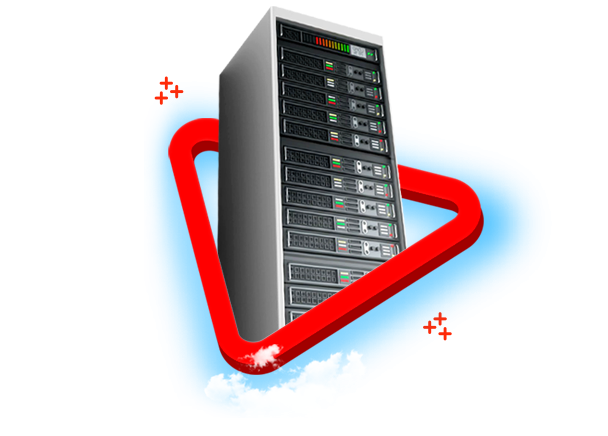
A NoSQL database is an approach to database management that can accommodate a wide variety of data models in graph, columnar, key-value, and document formats. Stay with us…
NoSQL database is generally non-relational, distributed, flexible and scalable. Other common characteristics of NoSQL databases include no database schema, data clustering, replication support, and eventual consistency, unlike ACID transaction compatibility (integrity, consistency, isolation, durability, or persistence) in SQL and relational databases. Many NoSQL database systems are also open source.
The term NoSQL was originally taken from this word itself. That is, because SQL was not used as an API or application programming interface to access data, it was called NoSQL. However, the ubiquity and usefulness of SQL has led many NoSQL databases to support SQL.
Types of NoSQL databases
Table of Contents
There are four common types of NoSQL database systems, each using a different data model. As a result, there is a significant difference between each type of NoSQL.
Document Database
This database, also called document stores, stores semi-structured data and the description of that data in document format. They enable developers to create and update applications without referring to the original schema. Document database usage has increased along with the JavaScript programming language (JavaScript) and JavaScript object markup (JSON). JSON is a standard for text-based formatting that has gained a lot of value among web application developers.
Document databases are also used for content management and data management of mobile applications such as blogging platforms, web analytics, and e-commerce applications. Couchbase Server, CouchDB and Mark Logic are examples of document databases.
Graph database
Graph data stores organize data such as nodes that are similar to rows in a relational database, as well as edges (also called links) that show the relationship between nodes. Because the graph system shows the relationship between nodes stores, can support and represent a deeper and richer representation of data relationships.Also, unlike relational models that rely on detailed schemas, a graph data model can evolve over time and over time.
Graph database as a type of NoSQL is used in systems that need to map relationships such as social media platforms, reservation systems or customer relationship management. Examples of graph databases include AllegroGraph, IBM Graph, and Neo4j.
Key-Value Databases
These systems implement a simple data model that pairs a unique key with an associated value. Because this model is simple, it can be used to develop highly scalable and efficient applications. Key-value databases are ideal for session management and diagnostic web applications, such as when managing shopping cart details for online shoppers or for managing session details for multiplayer games.
These implementations differ in how they are placed with RAM, solid-state drives, or disk drives. Examples of key-value databases include Aerospike, DynamoDB, Redis, and Riak.

Wide-column stores
These databases use familiar tables, columns, and rows that are similar to relational database tables, but column names and formatting can vary from row to row in a table. . Each column is also stored separately on disk. Unlike traditional row-based storage, Wide-column stores are very suitable when querying data by columns. Typical applications in which these types of databases can be useful include recommendation engines, cataloging, fraud detection, and event logging. Examples of extensive columnar repositories include Accumulo, Amazon SimpleDB, Cassandra, HBase, and Hypertable.
These are just the basic categories of NoSQL database. Over time vendors have mixed and matched parts of various NoSQL database types to achieve more useful systems. For example, this evolution can be seen in MarkLogic, which added a graph store (graph store) and other elements to its main document database (document database). Couchbase Server supports two key-value and document approaches.
Cassandra database combines key-value elements with a wide-column store and a graph database. Sometimes NoSQL components are combined with SQL components to create diverse databases, which are referred to as multimodel databases.
Advantages of NoSQL
Using NoSQL databases has several advantages, for example:
- NoSQL databases simplify application development, especially useful for real-time interactive web applications such as those that use REST APIs and web services.
- These databases provide flexibility for data that is not normalized. This requires a flexible data model or different attributes for different data entities.
- They provide scalability for larger data sets common in analytics and artificial intelligence (AI) applications.
- NoSQL databases are better suited for the needs that exist in the cloud, mobile, social media and big data.
- NoSQL databases are designed for use in specific applications and are easier to use for those specific applications than a general-purpose SQL or relational database.
Disadvantages of NoSQL
The disadvantages of using a NoSQL database include the following:
- Each NoSQL database has its own syntax for querying and managing data. SQL, on the other hand, acts as a lingua franca for relational database systems and SQL.
- Due to the lack of a fixed schema and database limitations, the data integrity inherent in relational database systems and SQL is eliminated.
- A schema with a certain kind of structure is needed to use the data. This structure through NoSQL should be implemented by the database developer instead of the database administrator.
- Because most NoSQL databases use the ultimate persistence model, they do not offer the same level of data integrity as SQL databases. Sometimes the data is not stable; That is, they are not suitable for transactions that require immediate integration, including bank and ATM transactions.
- Because NoSQL databases are newer, comprehensive industry standards such as relational and SQL DBMS proposals do not exist.
What is the difference between NoSQL and SQL?
SQL databases are used for general purposes while NoSQL databases are designed for specific use cases. The main differences between NoSQL and SQL can be summarized in the following five categories: API, data model, schema requirements, scalability, and data integrity. Each of these two databases uses a different approach to these aspects of data storage and retrieval.
Application programming interface or API
Many NoSQL databases provide a query language similar to SQL. But the SQL database, which acts as an API for the data in the database, is not required for NoSQL. SQL For SQL databases, SQL is usually the only or primary data interface.
Data Model
In NoSQL database systems, data is not modeled as tables with fixed rows and columns like SQL DBMS. Instead, depending on the NoSQL database, data can be modeled as JSON documents, graphs with nodes and edges, or key-value pairs. Columnar-wide repositories use the table and row concept, but columns can be dynamic from row to row within a table.
Schema or Structure
The schema for a NoSQL database is flexible; This means that there is no fixed structure for the data itself, the data types and the length of the data elements. Data can be stored as free form or unstructured and schema. This approach offers higher flexibility to programmers and makes development and improvement easier.
In the SQL database, the schema is fixed and the types and length of the data for each column cannot be changed, and each row must match the column arrangement and the defined structure. For example, if a column is defined as an integer, only integer data can be stored in the column and any other attempts to do so will be rejected by the DBMS. This approach improves data quality because the DBMS executes its regular rules when data is added.
Scalability
NoSQL databases usually implement horizontal scalability, which is also called scaling out. Scaling involves adding more hardware to a system, usually in the form of new commodity servers. Horizontal partitioning uses a sharding technique to break large databases into smaller parts that are spread across multiple servers. And it happens frequently in NOSQL systems.
The SQL method is usually vertical scaling, which is also called scaling up. Through vertical scaling, additional resources such as a more powerful CPU or additional memory are added to handle additional workloads or improve performance.
Data integrity
NoSQL and SQL databases use different approaches to protect the integrity of data as it is created, read, updated, and deleted by applications and users.
Most NoSQL database systems manage data integrity with a method called BASE. This approach means basically available and Soft State or data change mode without application interaction due to ultimate stability. With BASE, the data may be unstable for a period of time, but database replication will eventually update all copies of the data to become consistent. Some applications can handle this type of inconsistent data, but others cannot.
The approach used in SQL databases is ACID. Each of its four properties—integrity, consistency, isolation, and durability—contributes to a transaction’s ability to ensure data integrity. By using ACID, every transaction (when executed alone in a persistent database) completes and produces correct results or terminates without any effect. In any case, the state created for the database will always be a fixed state.
CATEGORY:Blog











